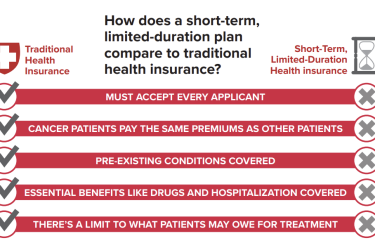
Health insurers are trying a wide variety of methods to link drug costs to the value medications deliver to patients. Value-based payment strategies bear watching for two reasons. First, they are aimed at controlling the high costs of prescription medications, and, second, they could usher in new ways of pricing all medications.
The idea that insurers should link a drug’s value to price is not new, but it is gaining traction, at least among private health plans. One proposal calls for paying for drugs based on the quality-adjusted life year, or QALY, a measure used to quantify the value of treatment.
Last month, Jeanne Whelan explained the QALY concept for The Wall Street Journal, explaining how England and Norway use it for pricing certain medications. In the United States the metric is more controversial. Pharmaceutical companies oppose it, saying it puts a price on life, she wrote.
Whelan added this: “The 2010 Affordable Care Act explicitly bans the government from using a cost-per-QALY yardstick, or any similar measure, ‘as a threshold to determine coverage’ under Medicare…”
If the federal Centers for Medicare & Medicaid Services can’t use the QALY metric, its efforts to set value-based prices for some medications may be limited. For Managed Care magazine, Jack McCain did a thorough analysis of QALYs and addresses the Medicare and QALY issue as well.
Pay for performance
Medicare has other value-based strategies it could use, such as pay-for-performance, which Harvard Pilgrim Health Care is using for Amgen Inc.’s cholesterol drug Repatha. In November, Robert Weissman reported for The Boston Globe that Harvard Pilgrim got a discounted price and the potential for rebates if the medication doesn’t do what Amgen says it can do. Repatha is a new class of cholesterol drugs called PCSK9 inhibitors, which are not for all patients with high cholesterol but may help an estimated 10 million people.
The cost for this class of drugs is expected to be about $1.5 billion annually, according to a report, “Medical Cost Trend: Behind the Numbers 2016,” by PricewaterhouseCoopers. The PwC report showed that approvals for high-priced specialty drugs outpaced approvals for traditional medications or the past five years, a trend that is expected to continue.

As the cost of some drugs rises over $100,000 per patient per year, insurers and prescription-benefit managers say they should pay less when drugs don’t work well in certain patients, Peter Loftus reported in The Wall Street Journal. He described how a pharmacy benefits manager Express Scripts will use pay-for-performance pricing.
In June, the American Society of Clinical Oncology (ASCO) published the ASCO Value Framework, a system for assessing cancer drugs based on the benefits, toxicity and cost of each medication. Published in the Journal of Clinical Oncology, the framework can help physicians and patients discuss the relative value of new cancer therapies and compare them with established treatments, ASCO said.
Clearly there’s a need for new ways to evaluate and price high-cost medications. To fill this need, Peter B. Bach, director of the Center for Health Policy and Outcomes at the Memorial Sloan Kettering Cancer Center, and Steven D. Pearson, president of the Institute for Clinical and Economic Review (ICER), have described what they say could be the next phase for value-based drug pricing. In an article for the Journal of the American Medical Association published online, “Payer and Policy Maker Steps to Support Value-Based Pricing for Drugs,” they described ICER’s drug assessment program and MSKCC’s DrugAbacus. The ICER’s effort aims to transform how drugs are evaluated and priced. DrugAbacus is an interactive web site that lets anyone evaluate the price of a drug based on its efficacy, tolerability, novelty, development cost, rarity, and population burden.
For examples of how value-based payment is working in areas outside of drug pricing, check out the report Lola Butcher wrote last year for the Healthcare Financial Management Association. The 4,500-word piece included five examples of value-based payment strategies that a hospital, a health insurer, physicians, and the California Public Employees, Retirement System are running.








